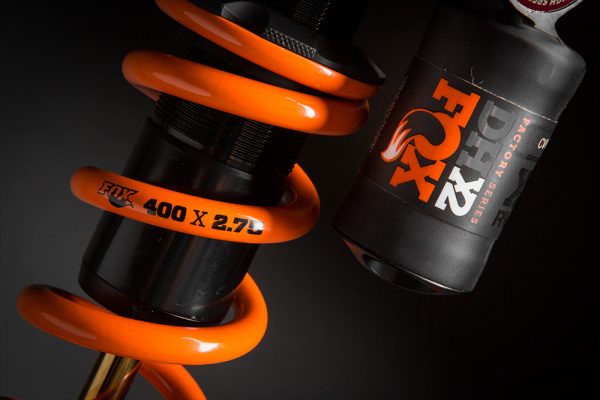We asked RockShox and Fox
Want to go full enduro or lured by the promise of a smooth rider? Which boing is best? Here’s how to pick the right shock and spring.
>>> Why are coil shocks making a comeback?
Should you switch to coil?

RockShox say…
RockShox has designed various ways of making the switch to coil a little bit easier, says Chris Mandell. “We’re offering 47.5mm stroke shocks, in both standard (the shortest eye-to-eye is a 185mm) and the trunnion design, which means a RockShox coil shocks will fit some pretty short-travel trail bikes,” he says.
“To improve pedalling the new Super deluxe coil shock comes with RCT3 three position pedal platform, which can be adjusted at the shock or via a handlebar remote. Cecil Ravenel is using this on her Commencal in the Enduro World Series.
“We also offer a wide range of spring rates and we’ve also reduced the physical weight of some of the most popular rates (350, 400 and 450lb) while keeping cost the same. We did this because we didn’t want the dealer or consumer to have to spend a lot of money to just get the correct spring. We’ve also added sag gradients on the shock shaft, which means you can measure the sag by simply sliding the bottom out bumper along to the other end of the shaft and using that as a guide.”

Fox say…
“Personally, I don’t consider coil an upgrade, you only have to look at world cup downhill over the last few seasons for evidence of this,” says Tim Williams at Fox UK. “Aaron Gwin using a Fox air shock where a number of his competitors run a Fox coil shock.
“Air shocks provide more versatility and have a bigger range of adjustment and they’re also lighter, which is advantageous uphill. However, the orange Fox coil springs do look great so I can see why they’re receiving attention and riders are choosing to consider running them.
“I believe it comes down to personal preference rather than what we’d recommend as a supplier and obviously the suspension design it’s being used on. For instance, if a bike has a linear curve then you may have difficulty with a coil shock because it’s also linear, whereas an air shock can be better tailored to suit by inserting volume spacers and increasing progression.”
How to get started on a coil shock
1. Measure your current shock’s eye to eye and shock stroke and then check if the manufacturer produces this size.
2. Using an online spring calculator work out the spring rate based on your weight (wearing all you’re riding gear) and bike it’s being fitted to. Try tftuned.com/spring-calculator
3. Measure the size of the mounting hardware and order the correct size from the manufacturer or a third party. Go to tftuned.com/mount-kit-guide for how to measure the mounting hardware.
4. Order the shock and correct rate spring. If you fall between two stools, Fox and RockShox both recommend going to the harder option. In the event the spring isn’t optimum, like if you were slightly generous about your weight, some suppliers offer a spring swap service.
5. Once you’ve fitted the shock you to bike set the sag to between 28-33%. If you’ve ordered the correct spring for your bike and weight you should be pretty much in the ball park but if not, you can check the sag manually. First measure the eye to eye length, then again sitting on the bike – the difference between these two measurements is sag. You can add a little bit of preload to the spring via the collar but you only have two turns of adjustment. If you’re still not in the 28-33% window you may need to switch to a harder or softer spring.




